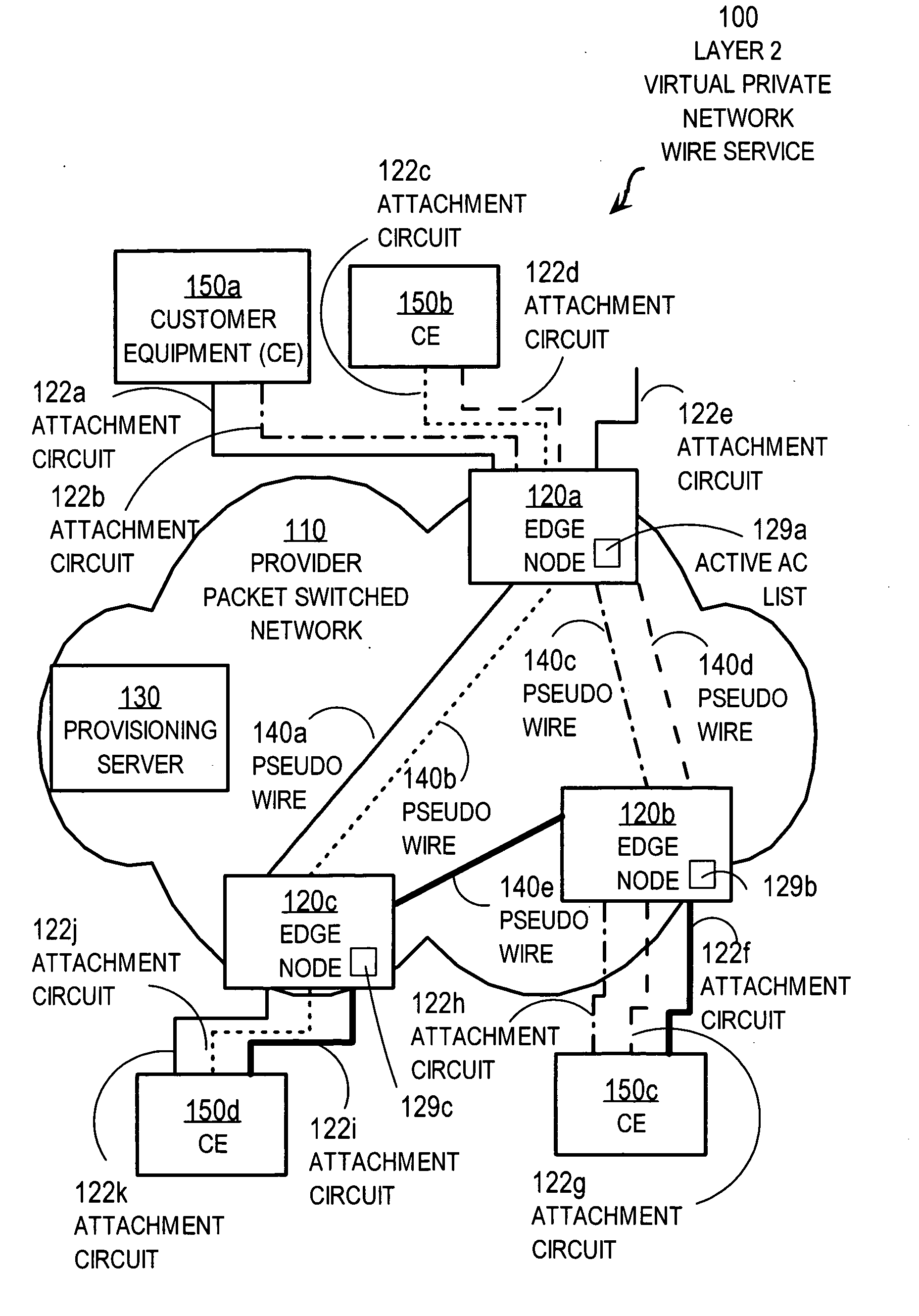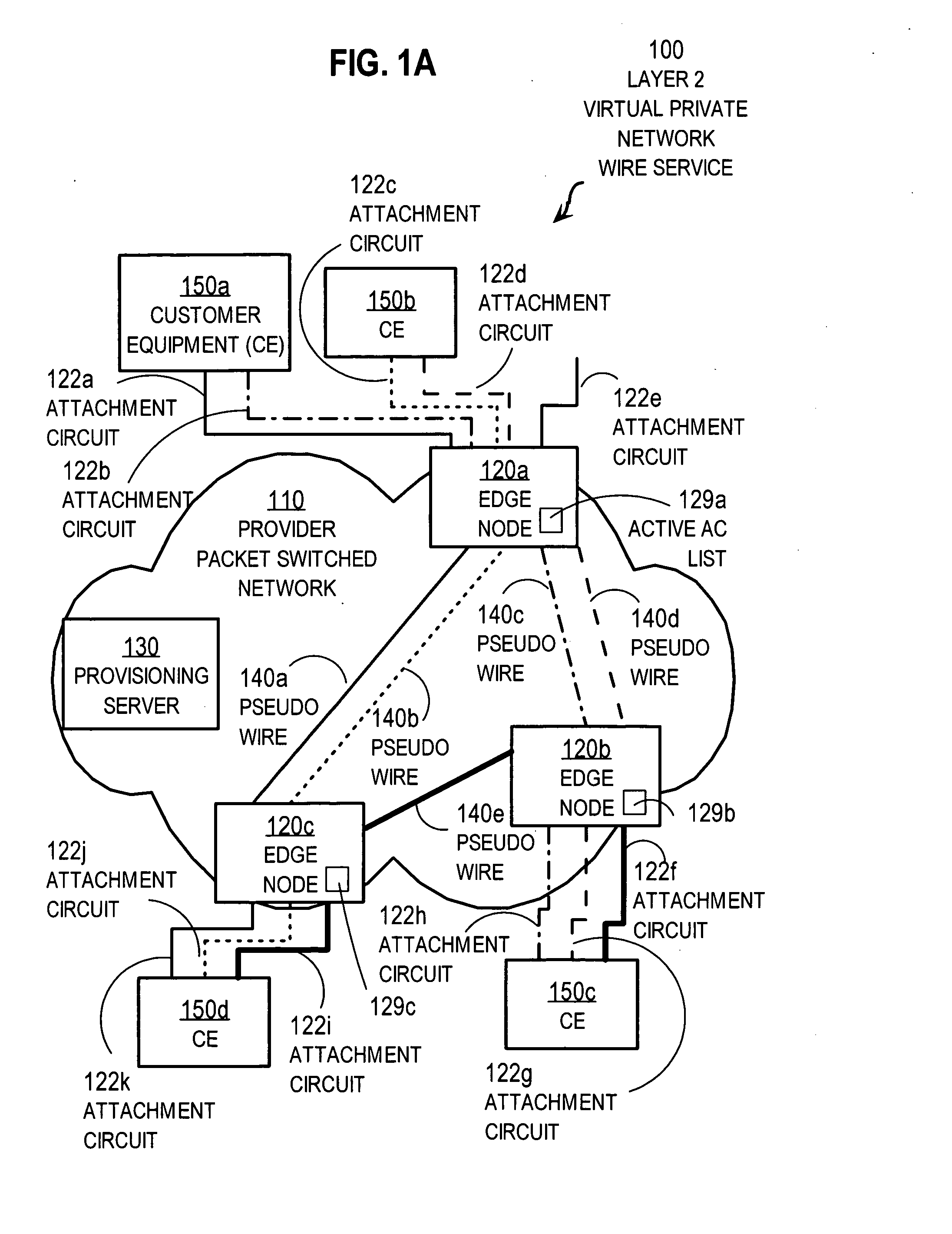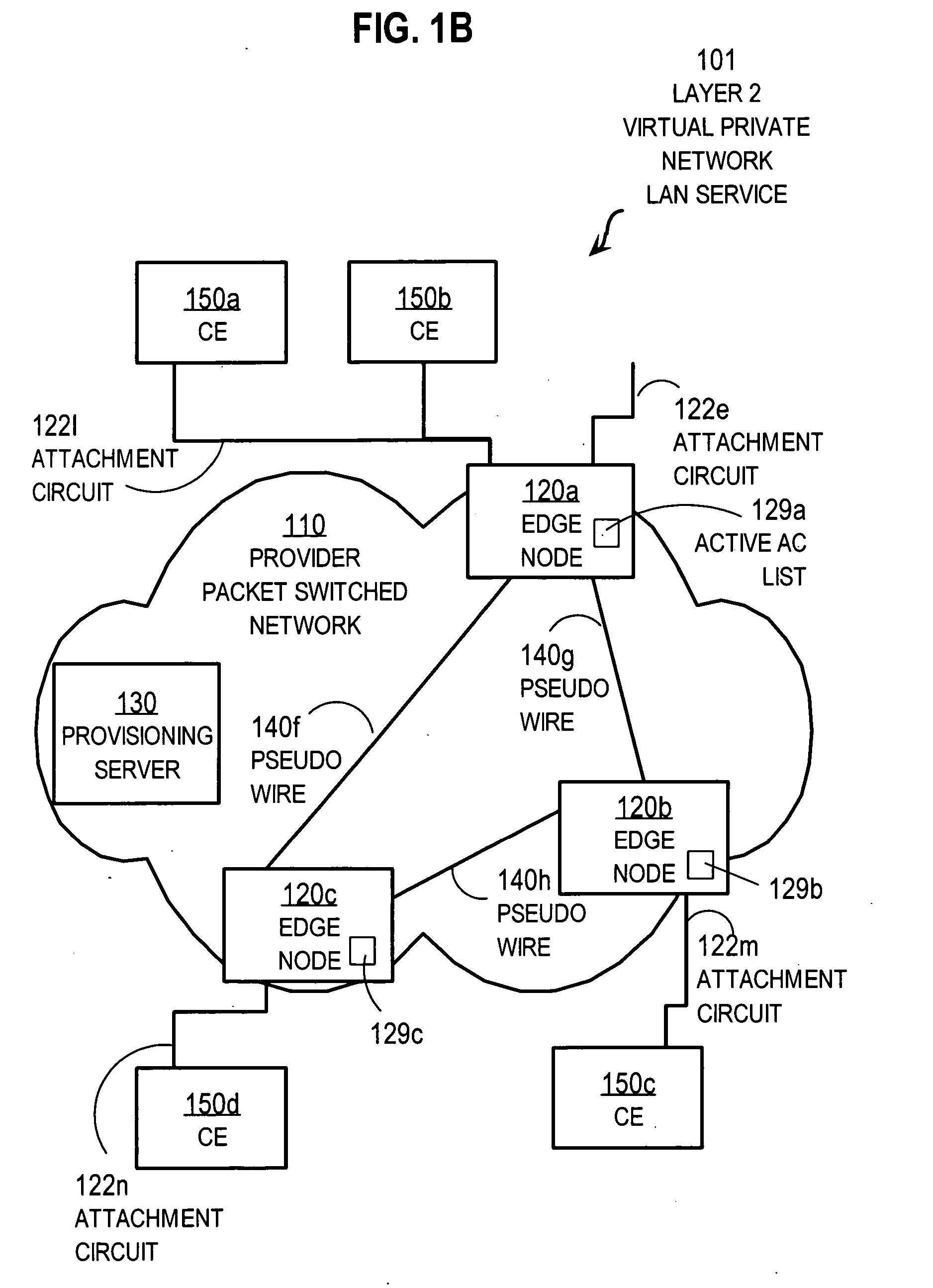Techniques for using first sign of life at edge nodes for a virtual private network
a virtual private network and edge node technology, applied in the field of virtual private network first sign of life technology, can solve the problems of equipment not being able to communicate over the vpn, tedious manual provisioning process, process delays,
- Summary
- Abstract
- Description
- Claims
- Application Information
AI Technical Summary
Benefits of technology
Problems solved by technology
Method used
Image
Examples
embodiment 272
[0080]FIG. 2D is a flow diagram that illustrates step 262 of the method of FIG. 2A for obtaining configuration data for a physical port in more detail, according to an embodiment 272. Step 272 is a particular embodiment of step 262. Step 272 includes step 273 and step 275. In step 273 one or more requests are sent to one or more provisioning servers identified in step 212. The request identifies the sending node and the physical port, for example by the IP address of the sending node in the header of the request and the physical port ID number of the port. For example, a request from PE 120a for port # 4 includes a source address of 1.1.1.1 in an IP header and a physical port ID of 4, with no data indicating a particular virtual circuit.
[0081] In step 275, one or more response messages are received from one or more provisioning servers. The response messages include data that indicates: [0082] 1] one or more VPNs used by that physical port; or [0083] 2] a customer device type to be ...
embodiment 274
[0088]FIG. 2E is a flow diagram that illustrates step 264 of the method of FIG. 2A for obtaining configuration data for a virtual circuit in more detail, according to an embodiment 274. Step 274 is a particular embodiment of step 264. Step 274 includes step 277 and step 279. In step 277 one or more requests are sent to one or more provisioning servers identified in step 212. The request identifies the sending node and the virtual circuit, for example by the IP address of the sending node in the header of the request and the virtual circuit identifier. For example, a request from PE 120a for the ATM switched virtual circuit includes a source address of 1.1.1.1 in an IP header and a virtual circuit ID of “20.2.34.” Similarly, a request from PE 120a for the FR switched virtual circuit includes a source address of 1.1.1.1 in an IP header and a virtual circuit ID of “25.11.”
[0089] In step 279, one or more response messages are received from one or more provisioning servers. The response ...
embodiment 281
[0103]FIG. 2C is a flow diagram that illustrates step 280 of the method of FIG. 2A for responding to a FSOL based on configuration data in more detail, according to an embodiment 281. Step 281 is a particular embodiment of step 280. Step 281 includes steps 282, 284, 286, 288. In other embodiments, one or more of these steps are omitted. For example in some embodiments, step 288 is omitted. In some embodiments, step 284 is omitted. In embodiments that do not use a list of active attachment circuits, step 286 is omitted.
[0104] In step 282, it is determined whether the signal received is consistent with the configuration data retrieved. For example, it is determined whether the configuration data indicates the customer has subscribed with the provider for a VLAN “46” on port # 4, or an ATM “2.34” on port #20, or a FR “11” on port #25. If not, control passes to step 288, described below. Consistency depends upon a policy programmed into the provisioning server. In various embodiments, t...
PUM
 Login to View More
Login to View More Abstract
Description
Claims
Application Information
 Login to View More
Login to View More - R&D
- Intellectual Property
- Life Sciences
- Materials
- Tech Scout
- Unparalleled Data Quality
- Higher Quality Content
- 60% Fewer Hallucinations
Browse by: Latest US Patents, China's latest patents, Technical Efficacy Thesaurus, Application Domain, Technology Topic, Popular Technical Reports.
© 2025 PatSnap. All rights reserved.Legal|Privacy policy|Modern Slavery Act Transparency Statement|Sitemap|About US| Contact US: help@patsnap.com



